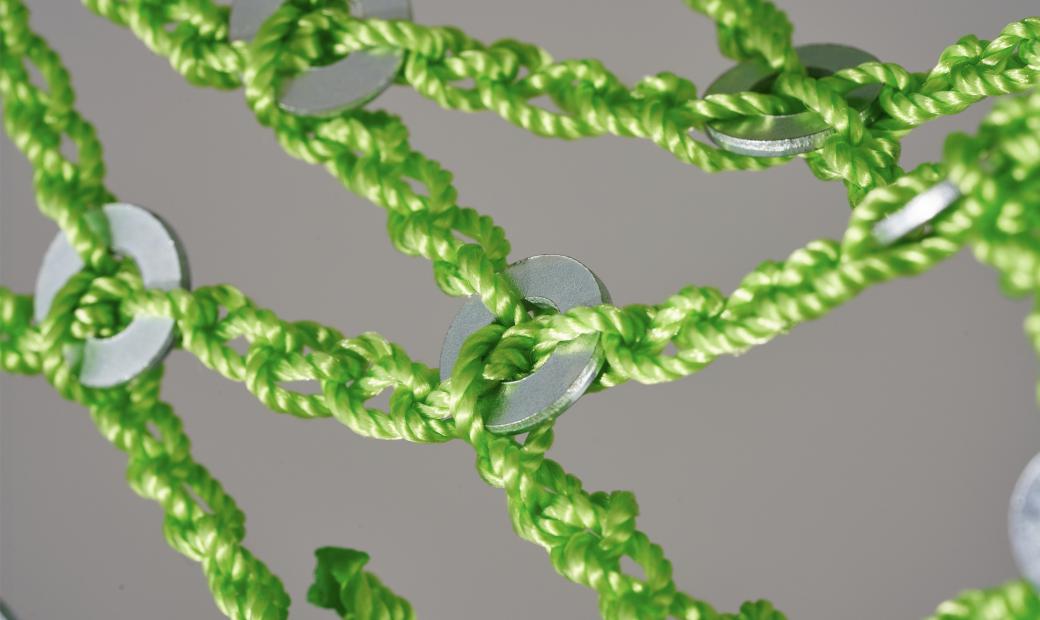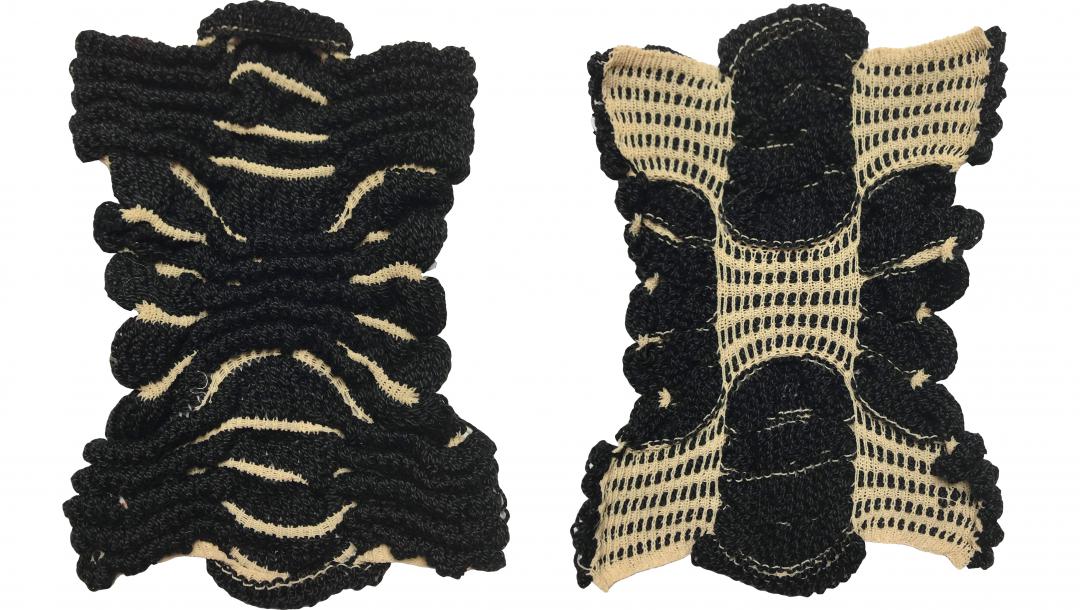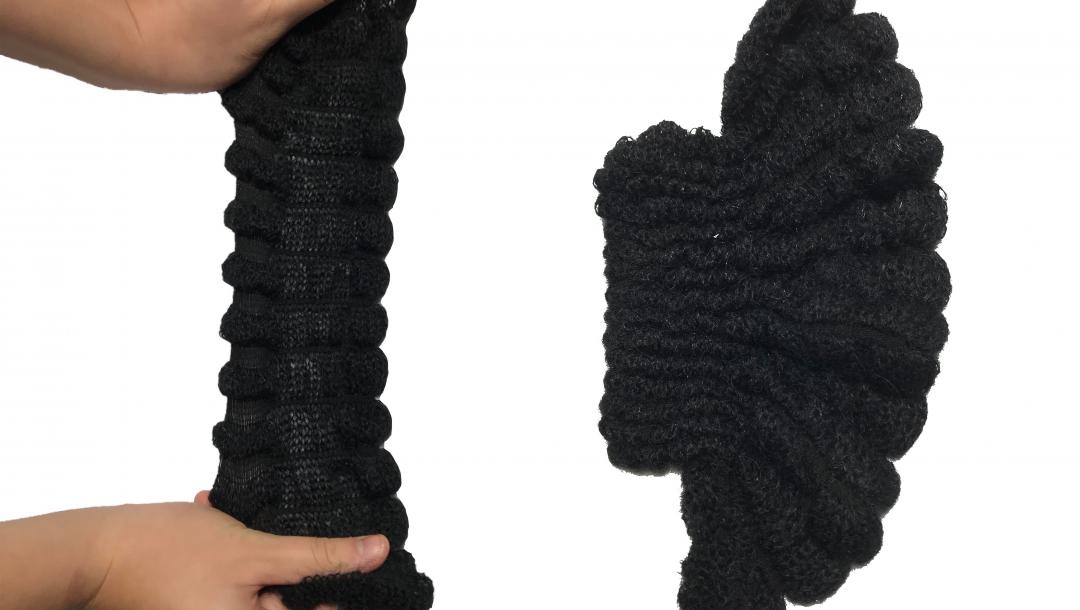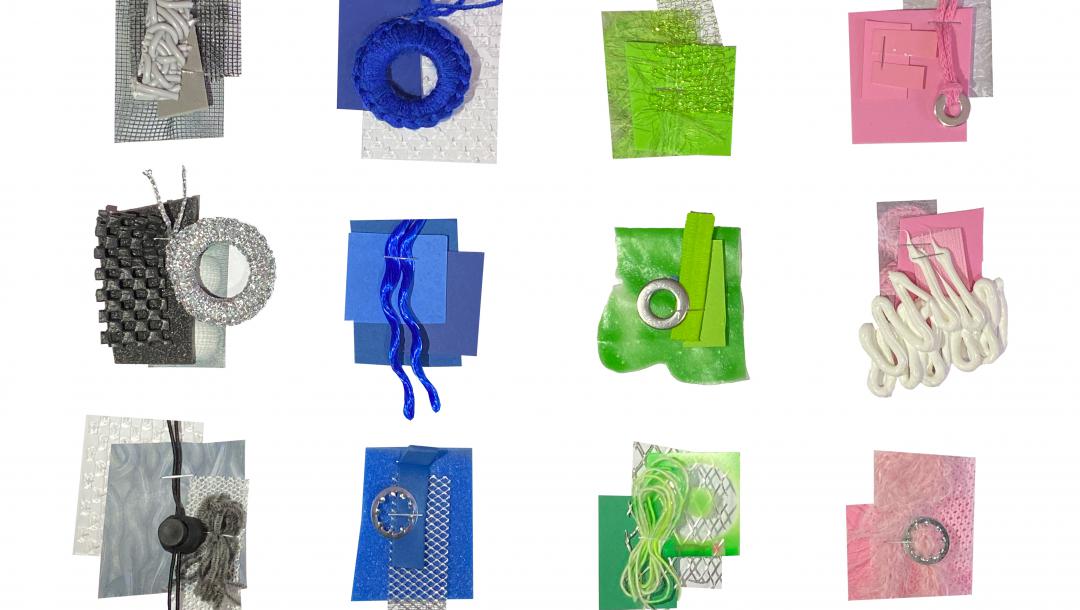
Hi Kiera! Could you briefly describe who you are, where you are from and why you became a designer?
My name is Kiera, I’m a Textile Designer from Berkshire, England but am currently based in Norwich after recently graduating with a BA in Textile Design. My fascination with textiles and design started at a young age, my mum taught me to both knit and crochet, but it was only during my art foundation diploma that I became much more dedicated to and focused on textiles. I then went on to study at Norwich University of the Arts, where I specialised in knit. This is where my experimentation with, and passion for materials really began, learning how to machine knit opened up a whole new range of possibilities to experiment with and different ways I could incorporate new and unusual materials into my designs.

Filthy Knits, your name on Instagram, speaks to the imagination. Can you explain a bit about your work?
My most recent project ‘unconventional touch’ explores the ways in which experimental and unconventional materials can be constructed into textiles through knit and crochet. The textiles I have made explore qualities needed to create innovative, tactile and interactive fabrics. An integral part of my process has been utilising material exploration, sampling and research. Through this I have found that materials can possess different tactile qualities than they appear to. I aim to challenge the perceptions of materials while creating unexpected haptic sensations when interacting with the textiles.
Where do you look for inspiration?
Materials! I’m always sourcing new materials, experimenting with these and exploring how they interact is what often leads my projects. I’m very hands on and tend to always start creating and making at the beginning of a project, these initial material investigations are key in inspiring drawings, collages and the next stage of sampling.

For one of your crochet projects, you were inspired by Maasai tribe of Tanzania. How did you come up with this?
This project was inspired after a trip to Tanzania where I saw the Maasai tribe, I was originally drawn in by the intimate beading of their jewellery but was even more fascinated by the way these moved when they danced. I explored this concept of movement through creating similar jewellery, however using the traditional western craft of crochet as opposed to their traditional craft of beading the jewellery. On a later trip back to Tanzania I learnt the traditional beading from a local woman at the market, learning how to bead in this way has allowed me to consider different construction methods and new materials in my own work.
You experiment a lot with different materials. What has been your favourite knitting material so far? And is there a specific material you are still dying to use?
I love using Lycra, when knitted on the machine its stretch properties can really be exploited. By using certain techniques you can create a diversity of three dimensional and tactile fabrics. I recently wrote my dissertation on the ways stretch yarns can be combined with non-stretch yarn to create fabrics that change shape and structure when stretched.
I really want to try colouring silicone, so far I have been limited, clear and white are the most readily available. I think it would be really cool in a bright colour as this would obscure the perception of the material.

What is the most special or remarkable work you have ever made or designed?
It’s so hard to pick a favourite but i’d have to say my silicone knit. It’s super tactile and fun and the construction is really interesting. The knit process is subverted by the way it's constructed. Traditionally knit uses one continuous strand, pulling yarn through the loops, stitch by stitch. However in this textile separate rows of silicone have been piped out and dried. The loops then interlocked in horizontal rows leaving raw and unfinished edges
In response to the emerging coronavirus, many design events are cancelled and the number of commissions is noticeably decreasing for many designers. What impact has it had on you so far and how do you look to the future?
I just handed in my final project for university a couple of weeks ago, this was changed to a digital submission and obviously I didn’t have access to the facilities at university to finish my project how I would have liked. Our Degree Show and New Designers (London graduate design show) have both also moved online. I struggled with this originally as this is something I’ve been looking forward to for 3 years and my work requires interaction and manipulation to have its full effect. But I think this has made me more creative with the ways I photograph and showcase my work and pushed me to explore ways tactility and manipulation can be demonstrated digitally.
What are you currently working on?
I am currently working on my online submissions for our Degree Show and New Designers whilst working on my application and portfolio for masters study. I want to further explore the context of my work and the ways it can be worn on the body without compromising tactility and interactivity. I have always designed my textiles with a fashion context in mind but want to be able to develop these fabrics into garment form myself. I am currently trying to develop the silicone knit technique into a wearable garment, the construction methods make it difficult to do this without having raw unfinished edges although I’m working on possible solutions around this.
If you were able to choose anyone in the world to work with (a designer, politician, artist, scientist or someone else), who would that be and why?
I would love to work with fashion designer Issey Miyake. A lot of his garments interact with the body in really interesting ways, relying on specific movements to completely change the shape of the outfit. I find the way he approaches garment construction really interesting and would be able to learn so much from him. His A-POC collection is my favourite, in this collection he completely questions traditional concept of clothing. Finished pieces are cut out of long knitted tubes, different styles can be cut depending on customer preferences.
Hey Designer! Do you also want to be featured on our website? Use #heyddw on Instagram, and who knows, you might be next!















